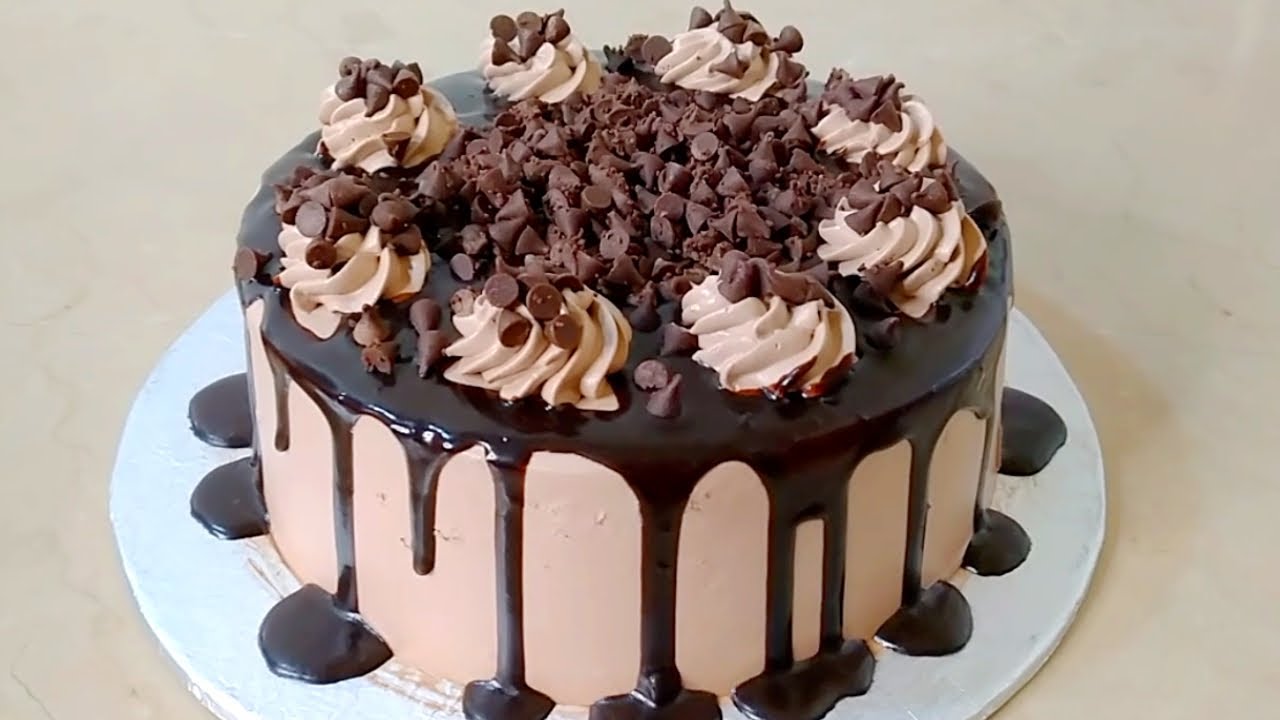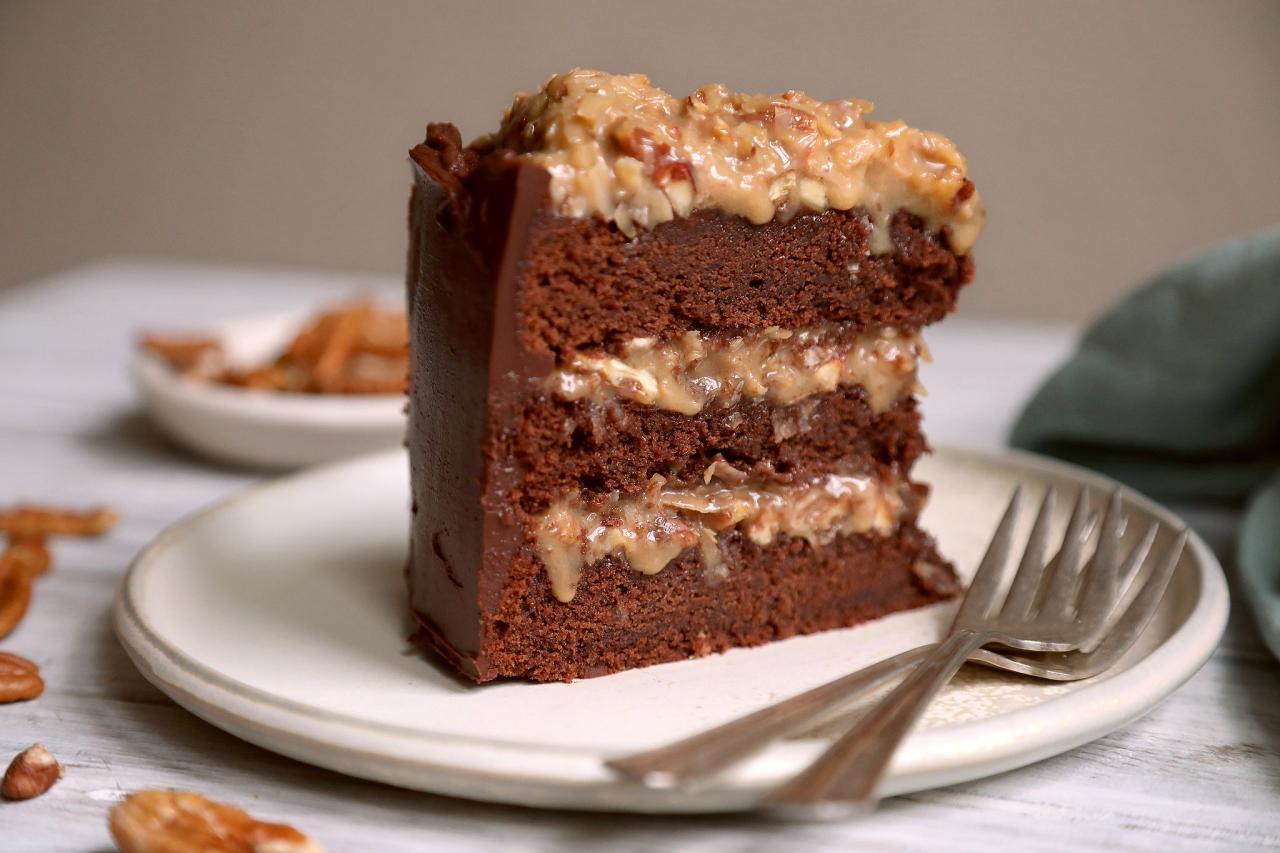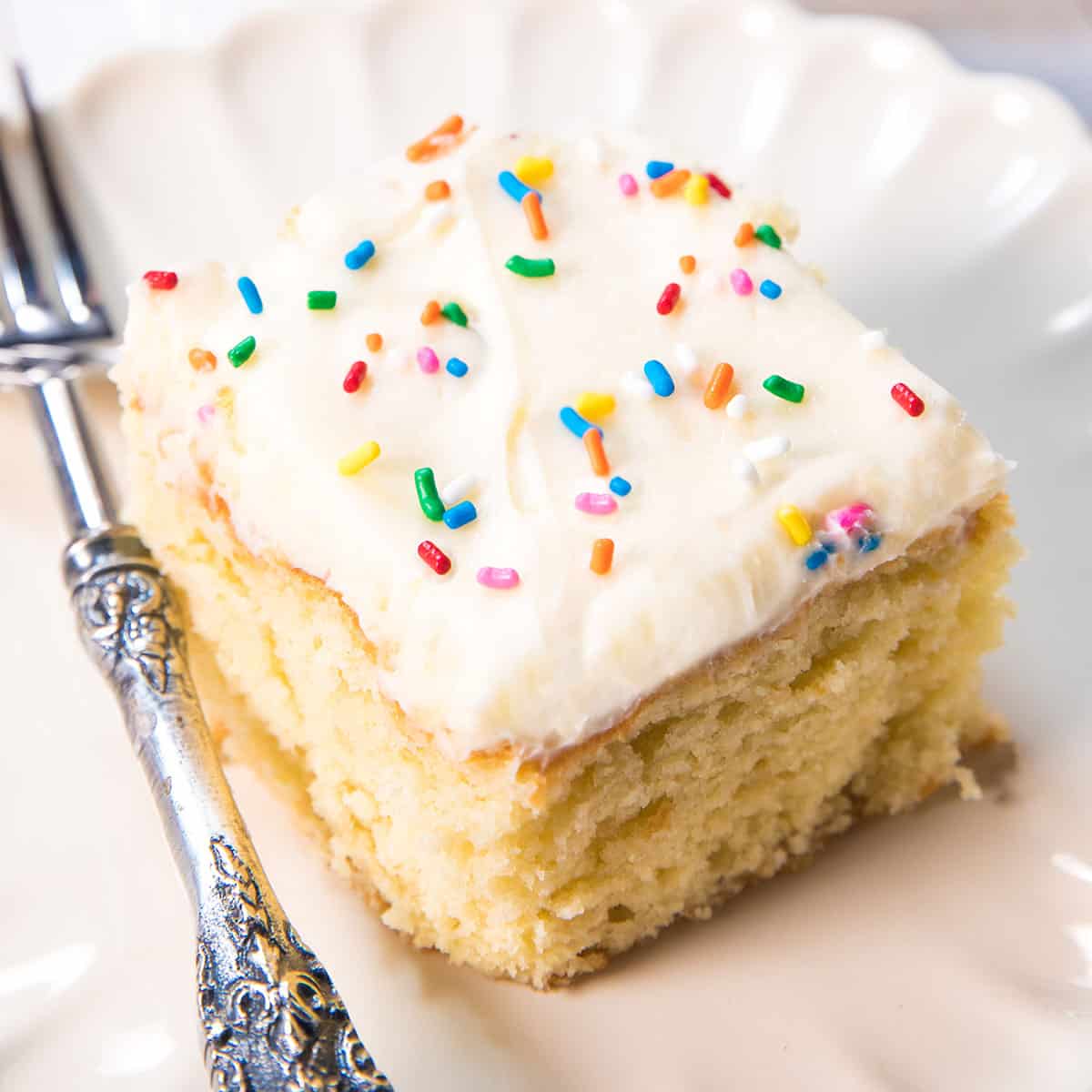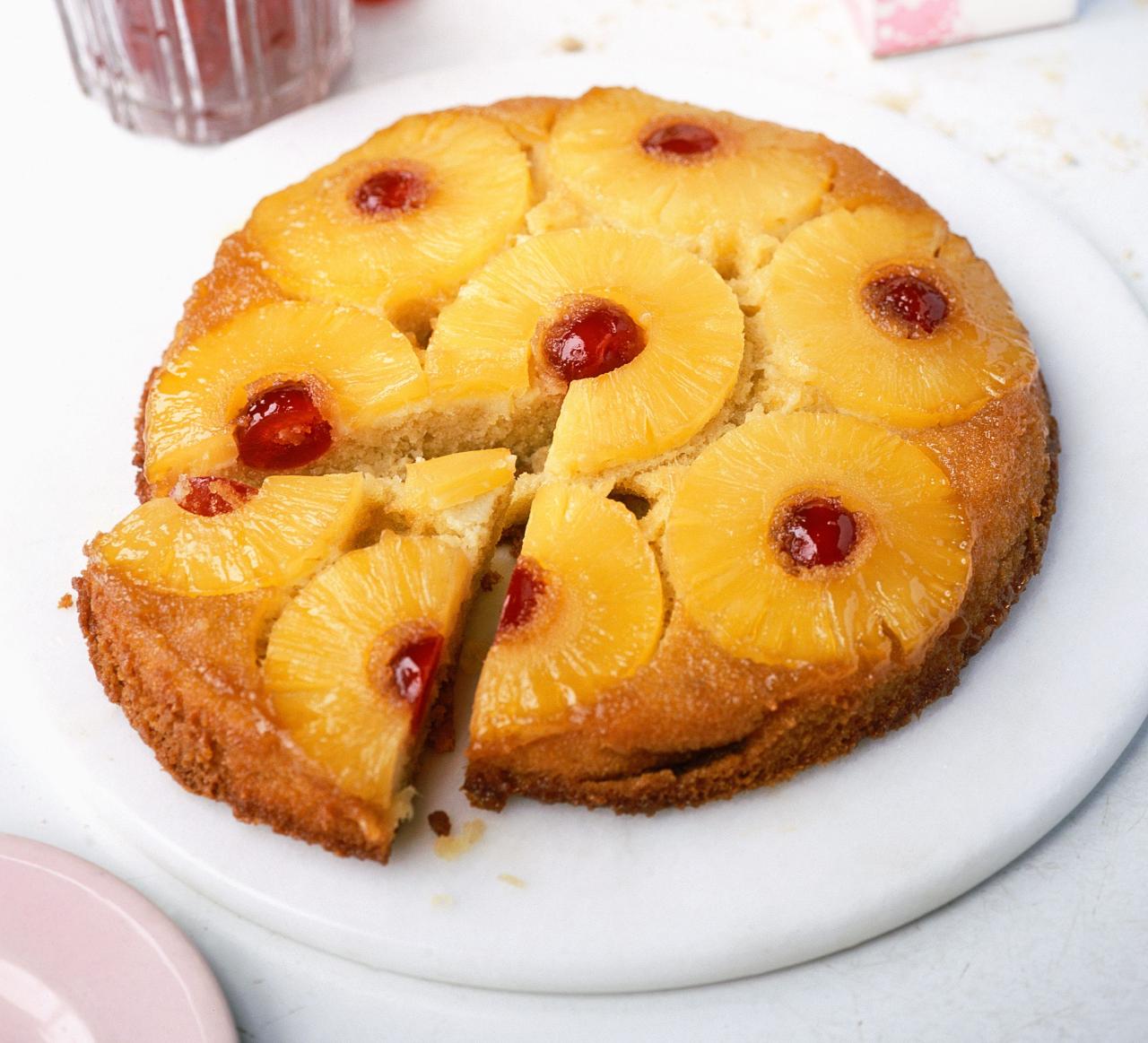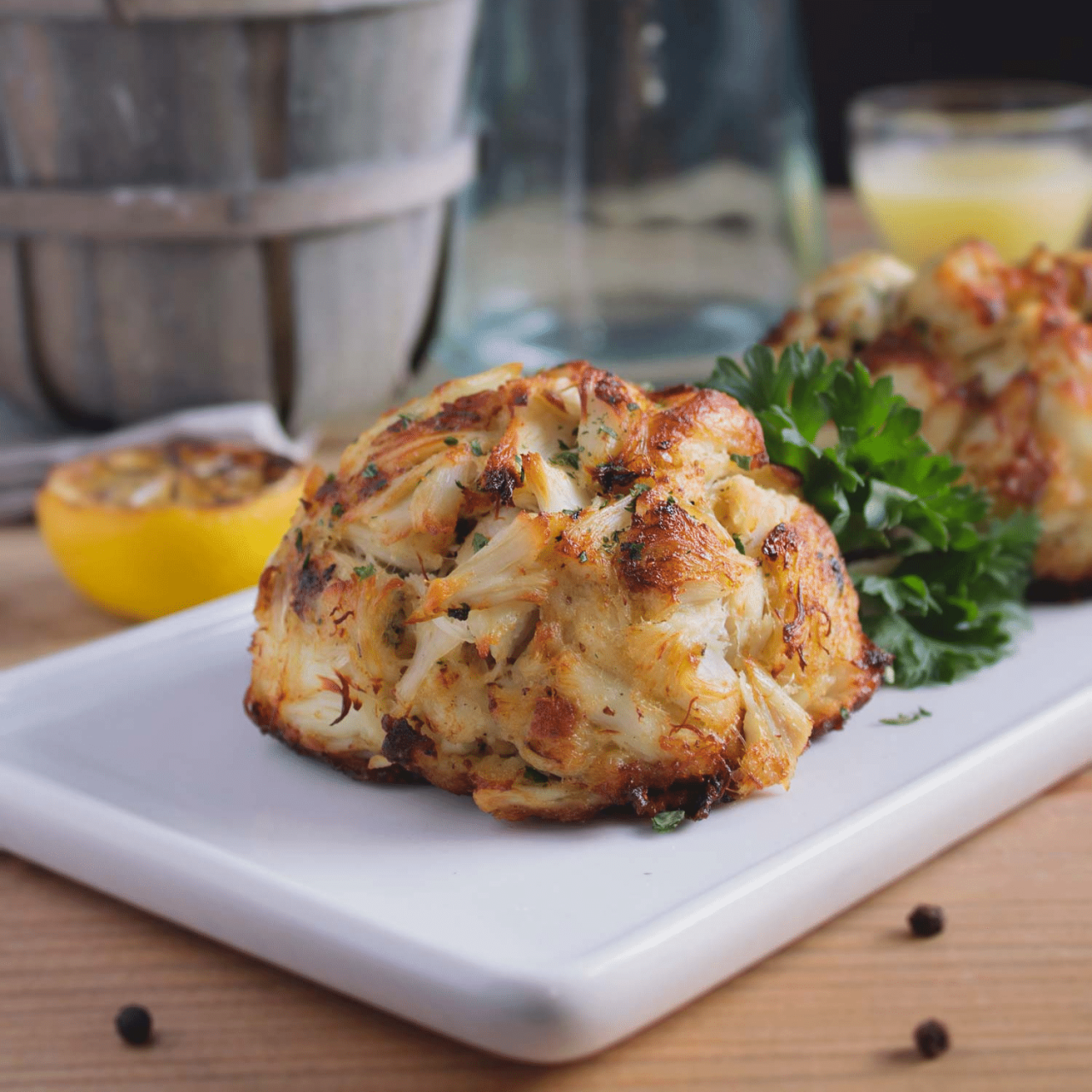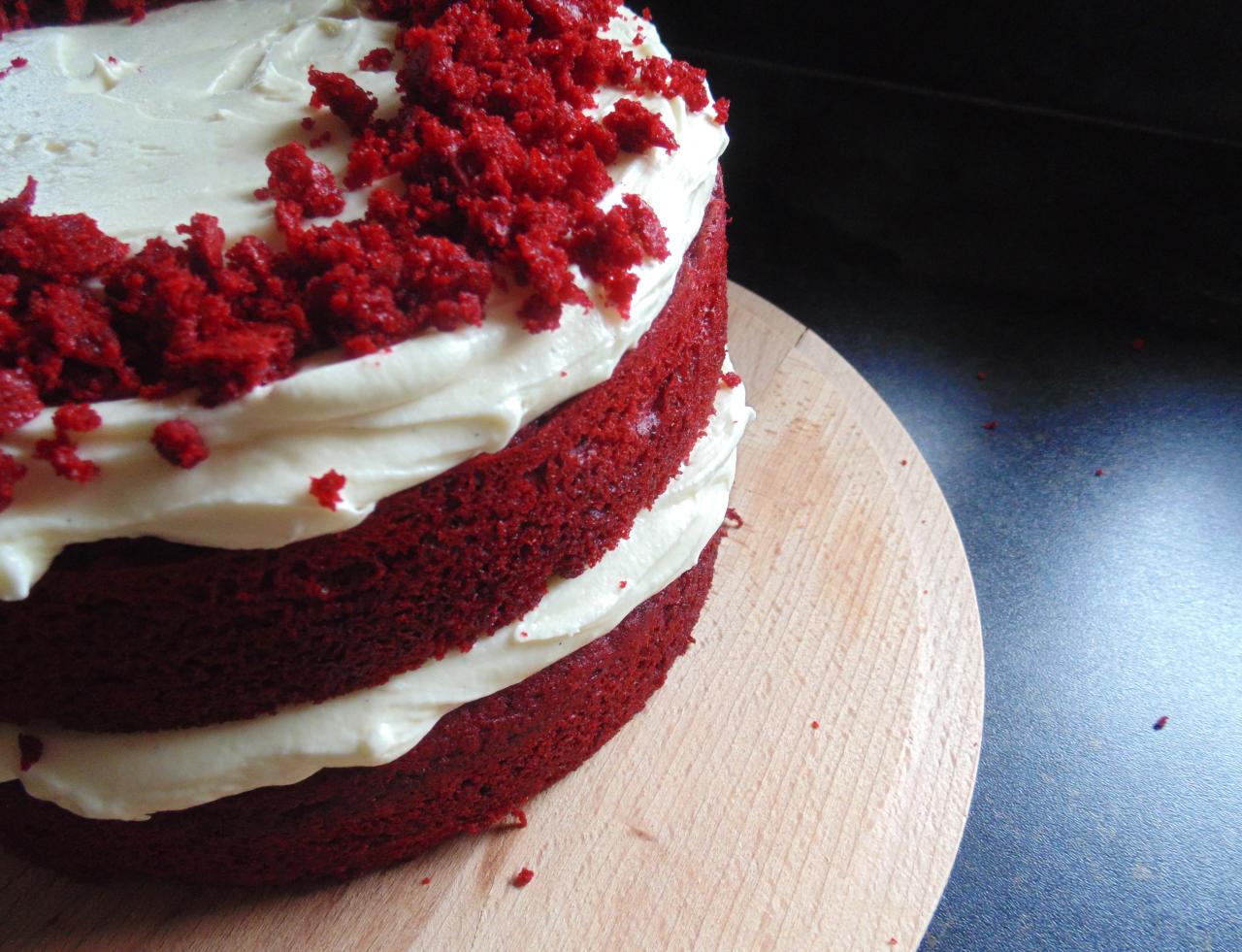Black cake, a rich and decadent dessert, holds a special place in the hearts and kitchens of many cultures around the world. Its history is as diverse as its flavors, weaving together threads of tradition, resilience, and celebration. From its origins in the Caribbean to its global presence, black cake is more than just a treat; it’s a symbol of heritage, a testament to culinary ingenuity, and a reminder of the enduring power of food to connect us across generations and cultures.
This journey into the world of black cake will explore its fascinating history, the secrets behind its unique flavor profile, and the cultural significance that makes it a beloved staple in countless homes. We’ll delve into the essential ingredients, the time-honored techniques, and the stories that have shaped this beloved dessert.
Black Cake: A Culinary Journey
Black cake, a rich and decadent dessert with a history as intricate as its recipe, is a cherished tradition in many cultures. This sweet treat, often associated with celebrations and special occasions, holds a unique place in the hearts and kitchens of families around the world.
From its humble origins to its diverse interpretations, black cake embodies the essence of heritage, culinary creativity, and the enduring power of shared experiences.
Historical Significance of Black Cake
Black cake’s history can be traced back to the Caribbean, where it emerged as a result of the transatlantic slave trade. During this period, enslaved Africans brought their culinary traditions and techniques to the Caribbean islands, where they adapted them to the available ingredients and resources.
Black cake, with its origins in African fruitcakes, became a symbol of resilience and cultural preservation. It was often prepared for special occasions, such as weddings, birthdays, and holidays, serving as a reminder of their heritage and a testament to their culinary ingenuity.
Cultural Context of Black Cake
Black cake holds different cultural meanings and interpretations across various regions. In the Caribbean, it is a staple dessert at weddings and other celebrations. The cake’s dark color is often associated with good luck and prosperity, making it a fitting symbol for auspicious occasions.
In the United States, black cake is particularly popular in African American communities, where it is often served during the holidays, especially Christmas and Kwanzaa. The cake’s rich history and its association with family gatherings and celebrations make it a powerful symbol of cultural identity and continuity.
Origins and Evolution of the Recipe
The recipe for black cake has evolved over centuries, reflecting the influence of different cultures and the availability of ingredients. The original recipe, brought by enslaved Africans, featured fruits, spices, and molasses, which were readily available in the Caribbean.
Over time, the recipe was adapted to incorporate local ingredients and techniques, leading to regional variations. In some regions, rum is added to the batter, while others prefer a more subtle flavor profile. The use of spices, such as cinnamon, nutmeg, and cloves, also varies depending on the region and the individual cook’s preferences.
Variations in Ingredients and Preparation Methods
The beauty of black cake lies in its versatility. There are numerous variations in ingredients and preparation methods, each reflecting the unique culinary traditions and preferences of different regions. For example, some recipes call for the use of dried fruits, such as raisins, currants, and cherries, while others incorporate fresh fruits, such as cherries, pineapple, or papaya.
The amount of molasses used can also vary, resulting in cakes with different levels of sweetness and richness. Some recipes call for the cake to be soaked in rum or brandy after baking, while others prefer a dry cake.
The variations in ingredients and preparation methods contribute to the rich tapestry of black cake traditions.
Ingredients and Techniques: Black Cake
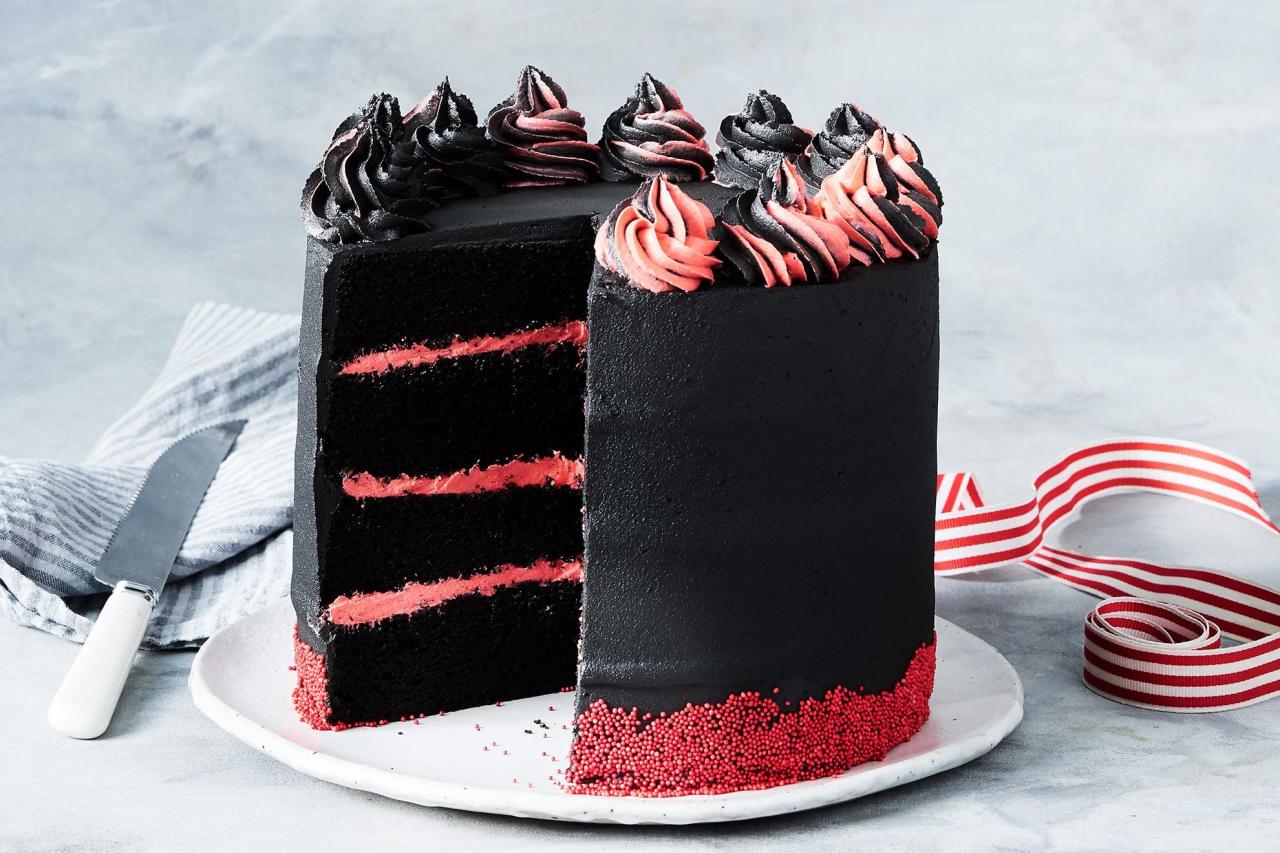
The essential ingredients of a traditional black cake are relatively simple, but their combination creates a complex and flavorful dessert.
Essential Ingredients
- Flour:The base of the cake, providing structure and texture.
- Sugar:Sweetens the cake and helps to balance the bitterness of the molasses.
- Molasses:Adds a rich, deep flavor and a characteristic dark color to the cake.
- Butter:Adds richness and moisture to the cake.
- Eggs:Bind the ingredients together and contribute to the cake’s texture and rise.
- Spices:Enhance the flavor profile of the cake, adding warmth and complexity.
- Fruits:Add sweetness, texture, and visual appeal to the cake.
- Rum or Brandy (optional):Adds a boozy note to the cake and helps to keep it moist.
Purpose of Each Ingredient
- Flour:Provides structure and texture to the cake. It helps to hold the other ingredients together and prevents the cake from collapsing.
- Sugar:Sweetens the cake and balances the bitterness of the molasses. It also helps to create a tender crumb.
- Molasses:Adds a rich, deep flavor and a characteristic dark color to the cake. It also contributes to the cake’s moisture and chewiness.
- Butter:Adds richness and moisture to the cake. It also helps to create a tender crumb.
- Eggs:Bind the ingredients together and contribute to the cake’s texture and rise. They also add richness and flavor.
- Spices:Enhance the flavor profile of the cake, adding warmth and complexity. Common spices used in black cake include cinnamon, nutmeg, cloves, and allspice.
- Fruits:Add sweetness, texture, and visual appeal to the cake. Dried fruits, such as raisins, currants, and cherries, are commonly used in black cake.
- Rum or Brandy (optional):Adds a boozy note to the cake and helps to keep it moist. It also enhances the flavor of the cake.
Techniques for Preparing the Cake Batter and Frosting
The preparation of black cake batter involves a few key steps. The butter and sugar are typically creamed together until light and fluffy, incorporating air into the batter and creating a tender crumb. The eggs are then added one at a time, followed by the molasses and spices.
The dry ingredients, including the flour, are gradually added to the wet ingredients, mixing until just combined. The fruits are then folded into the batter, ensuring they are evenly distributed throughout the cake. The batter is then poured into a greased and floured cake pan and baked until a toothpick inserted into the center comes out clean.The frosting for black cake is typically a simple buttercream frosting made with butter, powdered sugar, and milk.
The butter is creamed with the powdered sugar until light and fluffy, and the milk is added gradually until the frosting reaches the desired consistency. The frosting can be flavored with vanilla extract or other flavorings, such as rum or almond extract.
Step-by-Step Guide for Baking a Black Cake
- Preheat oven to 350 degrees F (175 degrees C). Grease and flour a 9×13 inch baking pan.
- In a large bowl, cream together the butter and sugar until light and fluffy.
- Beat in the eggs one at a time, followed by the molasses.
- In a separate bowl, whisk together the flour, baking soda, baking powder, salt, cinnamon, nutmeg, and cloves.
- Gradually add the dry ingredients to the wet ingredients, mixing until just combined.
- Fold in the fruits.
- Pour the batter into the prepared pan and bake for 30-35 minutes, or until a toothpick inserted into the center comes out clean.
- Let the cake cool completely in the pan before frosting.
Flavor Profile and Sensory Experience
Black cake offers a unique and captivating flavor profile that tantalizes the taste buds. The combination of ingredients creates a symphony of flavors that are both familiar and unexpected.
Unique Flavor Profile, Black cake
Black cake is characterized by its rich, deep flavor, with notes of molasses, spices, and fruits. The molasses provides a distinct bitterness that is balanced by the sweetness of the sugar and fruits. The spices, such as cinnamon, nutmeg, and cloves, add warmth and complexity to the flavor profile.
The fruits, whether dried or fresh, contribute sweetness and texture to the cake. The optional addition of rum or brandy enhances the flavor profile, adding a boozy note that complements the other flavors.
Comparison with Other Cake Varieties
Black cake stands apart from other cake varieties due to its unique flavor profile and texture. Unlike lighter cakes, such as angel food cake or sponge cake, black cake is dense and moist, with a rich, chewy texture. The molasses and spices give it a distinctive flavor that is unlike any other cake.
While some cake varieties, such as gingerbread cake, also incorporate molasses and spices, black cake typically features a higher concentration of these ingredients, resulting in a more intense flavor profile.
Role of Spices and Flavoring Agents
Spices play a crucial role in shaping the flavor profile of black cake. They add warmth, complexity, and depth to the cake’s flavor. Cinnamon, nutmeg, cloves, and allspice are commonly used spices in black cake, each contributing its own unique flavor notes.
The combination of these spices creates a harmonious blend that enhances the overall flavor profile of the cake. The optional addition of rum or brandy further enhances the flavor profile, adding a boozy note that complements the other flavors.
Sensory Analysis of Black Cake
Black cake offers a multi-sensory experience that engages all the senses. Its appearance is dark and rich, often adorned with colorful fruits or a generous layer of frosting. The texture is dense and moist, with a slight chewiness that adds to its appeal.
The aroma is warm and inviting, with notes of molasses, spices, and fruits. The flavor is complex and satisfying, with a balance of sweetness, bitterness, and spice. The overall sensory experience of black cake is one of indulgence and satisfaction, making it a truly memorable dessert.
Black Cake in Literature and Art
Black cake’s enduring presence in culture has inspired writers, poets, and filmmakers to explore its symbolic significance. It has become a literary motif, representing heritage, family, and the enduring power of tradition.
Examples of Black Cake in Literature, Poetry, or Film
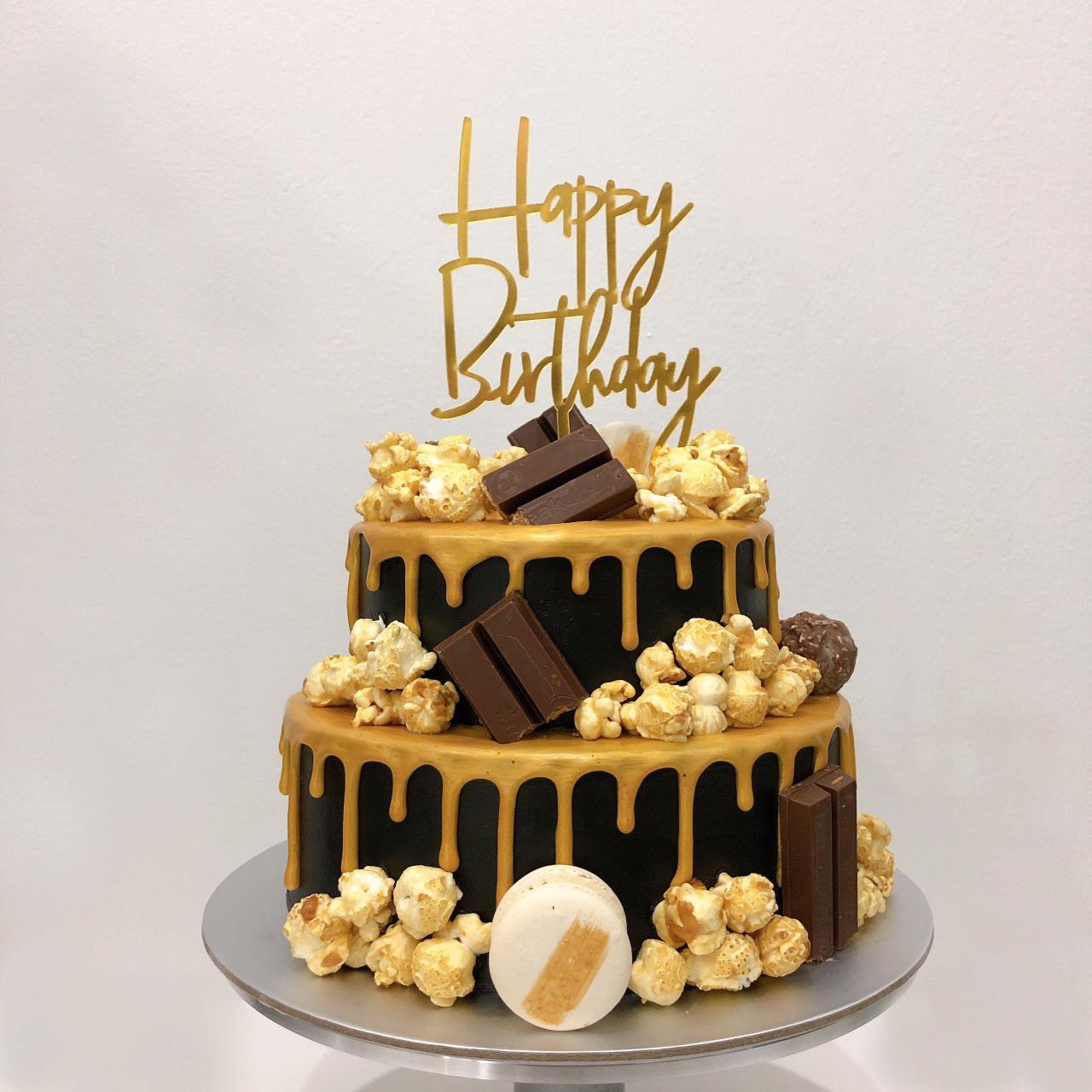
Black cake has been featured in various literary works, including novels, short stories, and poems. In Jamaica Kincaid’s novel “Annie John,” black cake is used as a symbol of the protagonist’s childhood memories and her relationship with her mother.
In the short story “Black Cake” by the same author, the cake serves as a metaphor for the protagonist’s journey of self-discovery and her search for her identity. In the film “The Help,” black cake is featured in a scene where a group of African American women gather for a tea party, highlighting the cake’s significance in their cultural traditions.
Symbolic Significance of Black Cake in These Works
In these works, black cake serves as a powerful symbol of heritage, family, and the enduring power of tradition. It represents the connection between generations, the importance of shared experiences, and the cultural values that are passed down from one generation to the next.
The cake’s dark color is often associated with the resilience and strength of African American communities, while its rich flavor and complex texture reflect the depth and complexity of their cultural heritage.
Anecdotes or Stories About Black Cake and its Cultural Impact
Black cake is often associated with personal stories and anecdotes that reflect its cultural significance. Many people have fond memories of their grandmothers or mothers baking black cake for special occasions, creating a sense of warmth, nostalgia, and connection.
The cake is often seen as a symbol of love, care, and tradition, representing the bonds that unite families and communities. Its cultural impact extends beyond its deliciousness, serving as a reminder of the rich history and enduring traditions of African American communities.
Visual Representation of Black Cake through a Poem or Short Story
[Here, you can include a poem or a short story that visually represents black cake and its cultural significance. The poem or story should evoke the senses, using imagery and language that captures the essence of black cake and its role in cultural traditions.]
Black Cake: A Symbol of Heritage and Tradition
Black cake transcends its status as a mere dessert; it is a symbol of heritage, tradition, and the enduring power of family and community. It serves as a tangible connection to the past, a celebration of cultural identity, and a reminder of the shared experiences that bind people together.
Role of Black Cake in Family Gatherings and Celebrations
Black cake is a staple dessert at family gatherings and celebrations, bringing people together and creating lasting memories. It is often served at weddings, birthdays, holidays, and other special occasions, marking milestones and creating moments of joy and connection.
The act of sharing a piece of black cake symbolizes a shared heritage, a sense of belonging, and the importance of family and community.
Black Cake as a Connection to the Past and a Celebration of Heritage
Black cake is a tangible connection to the past, linking generations through its shared history and traditions. Each bite of the cake evokes memories of family gatherings, cultural celebrations, and the enduring power of heritage. The recipe itself is often passed down from one generation to the next, ensuring that the tradition of black cake continues to thrive.
The cake serves as a reminder of the resilience, creativity, and cultural richness of African American communities.
Personal Experiences or Stories About Black Cake and its Significance in Your Life
[Here, you can share personal experiences or stories about black cake and its significance in your life. This could include memories of family gatherings, cultural celebrations, or the importance of black cake in your family’s traditions. Sharing personal anecdotes adds a layer of authenticity and connection to the article.]
Black Cake as a Bridge for Cultural Divides and Fostering Understanding
Black cake can serve as a bridge for cultural divides and foster understanding between different communities. By sharing this cherished tradition, people can learn about different cultures, appreciate their diversity, and build connections based on shared experiences. Black cake can be a catalyst for conversations about history, culture, and the importance of preserving traditions.
It can also be a vehicle for celebrating the richness and diversity of human experience.
Wrap-Up
From the warmth of family gatherings to the vibrant tapestry of cultural celebrations, black cake continues to be a cherished symbol of connection and tradition. It’s a testament to the power of food to transcend time and space, bringing people together through shared experiences and flavors.
As we savor the richness of its history and the sweetness of its taste, we recognize that black cake is more than just a dessert; it’s a story, a legacy, and a reminder of the enduring spirit of resilience and culinary artistry.

